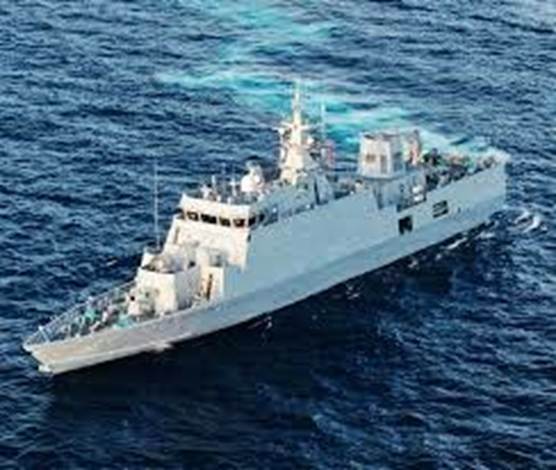Why is it in News?
- India’s first Mahe-class Anti-Submarine Warfare (ASW) Shallow Watercraft, INS Mahe, commissioned at Naval Dockyard, Mumbai.
- Commissioned by Army Chief General Upendra Dwivedi — first-ever time an Indian Army Chief presided over a naval warship commissioning.
- Represents a major step in naval indigenisation, with 80%+ indigenous components.
- Enhances coastal ASW capability, crucial amid rising Chinese undersea presence in the IOR.
Relevance
GS2 – Governance / Security
- Defence indigenisation push under Aatmanirbhar Bharat.
- Strengthening coastal & ASW capabilities.
GS3 – Internal and External Security
- Countering Chinese submarine presence in IOR.
- Enhancing littoral surveillance and deterrence posture.
- Boost to shipbuilding ecosystem.

What is a Mahe-class ASW Shallow Watercraft?
- A small, agile anti-submarine warfare vessel designed for coastal and near-shore operations.
- Optimised for detecting and neutralising mini-submarines, midget subs, diver-delivery vehicles, and shallow-water intrusions.
- Designed and built by Cochin Shipyard Limited.
- Part of the 8-vessel ASW Shallow Watercraft Project.
Key Features
- Indigenous Content: Over 80% locally sourced systems and components.
- Stealth profile: Low acoustic signature.
- Motto: Silent Hunters — reflects stealth ASW capability.
- Advanced systems:
- Integrated combat suite
- Modern Sonar, radars, electronic warfare systems
- Precision ASW weapons
- Long endurance for persistent coastal patrols.
- Interoperable with larger naval platforms, submarines, and aircraft.
Operational Role: Why is it Important?
- Forms the first line of coastal defence against undersea threats.
- Crucial for littoral ASW operations where larger ships cannot manoeuvre effectively.
- Enhances surveillance over choke points, harbour approaches, EEZ areas, and critical maritime infrastructure.
- Addresses increasing Chinese submarine activity and grey-zone operations in the IOR.
- Strengthens the coastal security grid post-26/11.
Strategic Significance
- Strengthens India’s Near-Sea Dominance Doctrine.
- Supports Sea Control + Sea Denial missions in shallow waters.
- Enhances India’s ability to monitor sub-surface intrusions by state and non-state actors.
- Contributes to deterrence posture in Eastern Arabian Sea / Bay of Bengal.
Indigenisation Significance
- Demonstrates India’s increasing ability to design, integrate, and deploy complex combatant vessels.
- Part of the larger Aatmanirbhar Bharat in defence shipbuilding.
- Reduces dependency on foreign sonar, sensors, and propulsion systems.
- Boosts competence of shipyards like CSL, essential for future larger combatant projects.
Tri-Service/Jointness Significance
- Commissioning done by Army Chief → symbolism of jointness, integration, and Theatre Command readiness.
- Highlights the shift toward:
- Multi-domain operations
- Unified maritime-land-air integration
- Future tri-service maritime theatre command
Technical-Operational Capabilities (Condensed)
- ASW Sensors: Hull-mounted sonar, variable depth sonar.
- ASW Weapons: Lightweight torpedoes, ASW rockets.
- Navigation & Communication: Integrated bridge system, modern communication suite.
- Endurance: Long-duration coastal operations.
- Other: High-speed manoeuvrability in shallow waters.
Broader Maritime Security Context
- Rising submarine traffic in the region demands persistent ASW presence.
- China’s submarine docking in Sri Lanka / Pakistan increases littoral surveillance needs.
- Coastal vulnerability after Mumbai 26/11 → need for layered security.
- Supports SAGAR (Security and Growth for All in the Region) doctrine.



